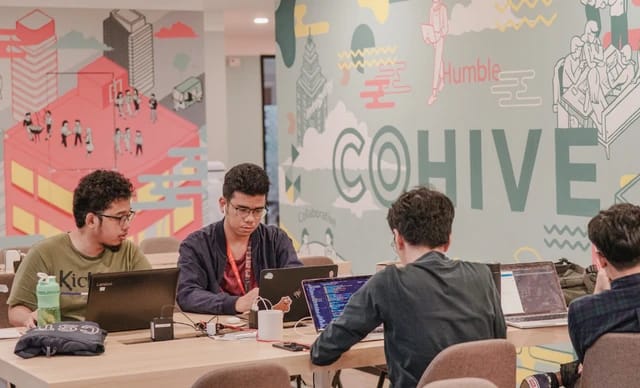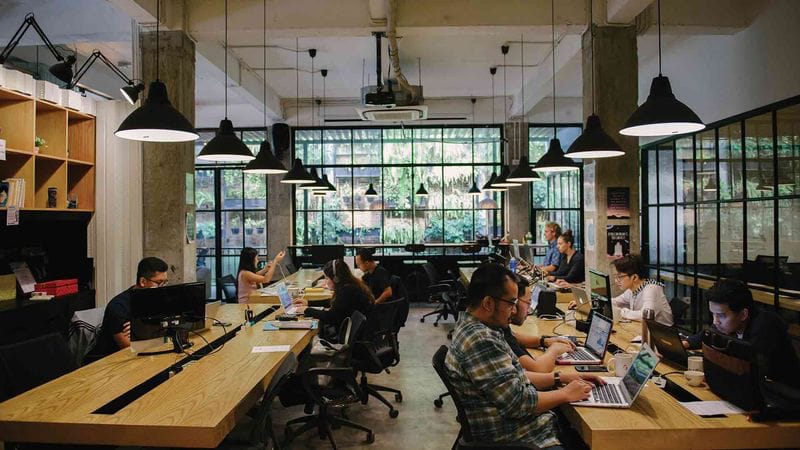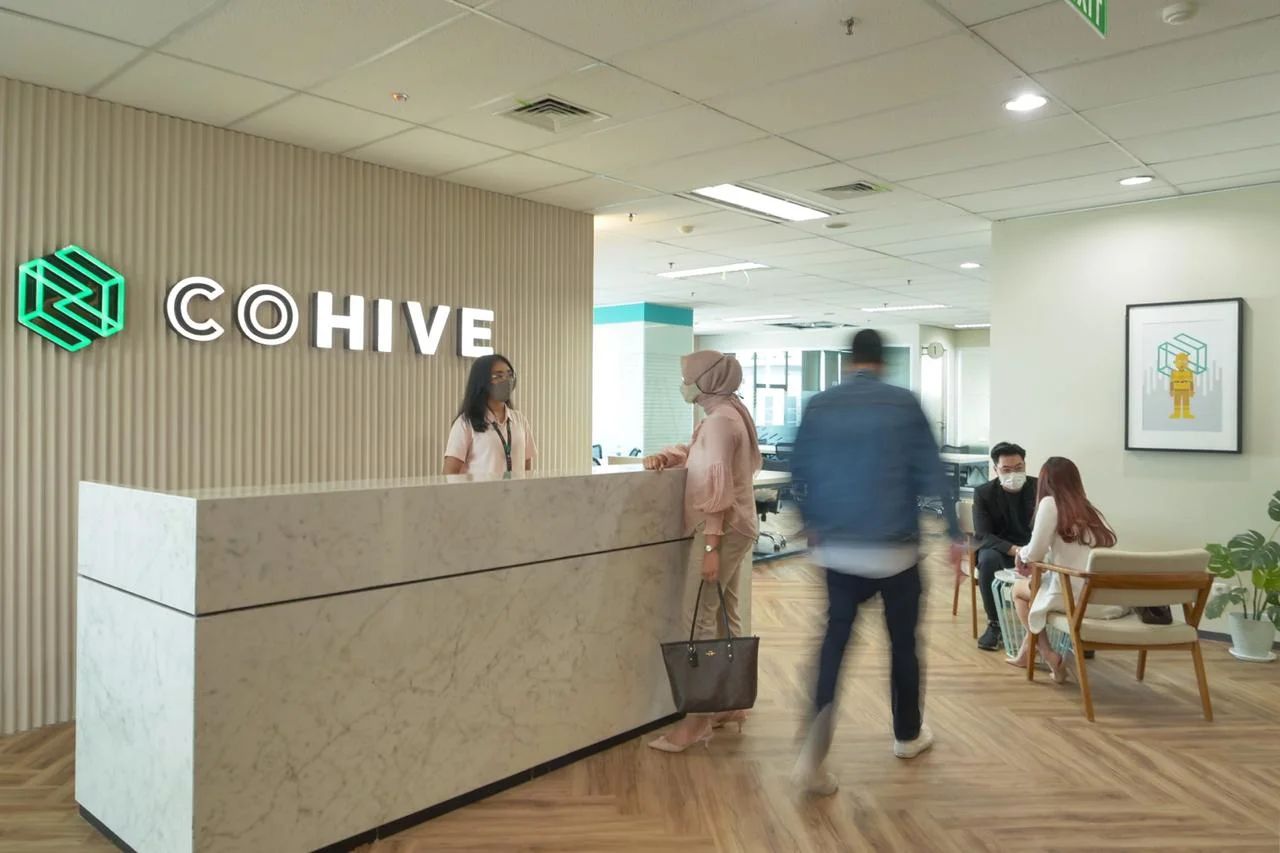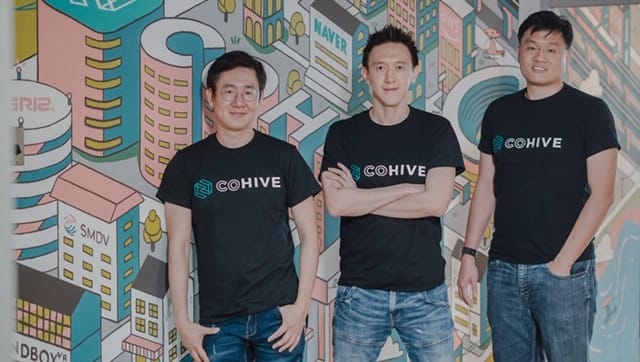- The Runway Ventures
- Posts
- 🤯 From $37M to Zero: CoHive’s Shocking Collapse
🤯 From $37M to Zero: CoHive’s Shocking Collapse
The 2 fatal mistakes that killed Indonesia's top coworking space
Hey Founders,
Welcome to The Runway Ventures — a weekly newsletter where I deep dive into failed startup stories to help you become the top 1% founder by learning from their mistakes with actionable insights.
Today’s story is about how CoHive went from occupying 29% of Jakarta's central business district offices to declaring bankruptcy. Let’s get to it! 🚀
Today at a Glance:
☠️ 1 Failed Startup → CoHive
⚠️ 2 Mistakes → Grew too fast (without unit economics check)
🧠 3 Lessons Learned → Diversify revenue streams early
🔗 The Runway Insights → How to delegate while maintaining high standards
💰 Southeast Asia Funding Radar → Spacely AI raises $1M (Seed) to help architects win more business
☠️ 1 Failed Startup: CoHive
🚀 The Rise of CoHive
🇮🇩 Founded by Jason Lee (CEO), Ethan Choi (CCO) and Carlson Lau (CSO) in 2017, CoHive provided managed co-working spaces by offering private offices, co-working spaces, meeting rooms, creative studios, and more.
🐝 EV Hive → CoHive
It all began in 2015 as EV Hive, an East Ventures internal project to provide a workspace for their portfolio startups — nothing fancy. Think of it as East Ventures' way of giving their invested companies a place to work and collaborate.
It was only rebranded to CoHive after Jason, Ethan and Carlson took over and decided to fix a huge problem for Indonesia startups — expensive office leases.
And that’s how CoHive was born.
The Problem — 🧑🏻💻 Office leases in Indonesia were insanely expensive (often 12-24 months of rent upfront), making it financially difficult for local startups to rent.
The Solution — 🚀 CoHive was an affordable alternative that provided private offices, shared co-working desks, meeting rooms, event spaces – and even co-living apartments — all under one roof.
Entrepreneurs and small companies could pay month-to-month instead of sinking huge sums into a long lease, and tap into a built-in community of peers.
🙌🏻 With flexible, professional workspaces at strategic locations across the city, CoHive’s solution was genius.
🤝🏻 People could work closer to where they needed to be without signing those brutal long-term office leases.
The timing couldn’t have been better. Indonesia’s co-working market was exploding — JLL estimated a 60% growth in 2018 alone. 🏄🏻♂️ And CoHive rode that wave. |
From 2017 to 2019, CoHive went from being a small East Ventures side project to becoming Indonesia's largest co-working space operator.
🌊 By 2019, they were already making waves:
Raised a total funding of over $37 million from big investors like SoftBank Ventures Korea, H&CK Partners, Tigris Investment, East Ventures and Insignia Venture Partners.
Operated around 30 locations with over 60,000 square meters of space.
Membership exploded to over 9,000 members (from 800+ companies) across Jakarta, Medan, Yogyakarta, Bali, and Surabaya.
Launched new verticals, including CoLiving apartments, CoRetail pop-up shops, and CoHive Event Space.
Became the market leader with around 29% of offices in Jakarta's central business district.
🇮🇩🏙️ At its peak, CoHive was literally everywhere you looked in the Indonesian startup scene.
It wasn’t just renting desks.
It was selling a dream of flexibility and collaboration.
🐝🐝🐝 It was buzzing with tons of hype.
📉 The Fall of CoHive
🦠 Everything was great until COVID-19 hit in March 2020.
😷 Suddenly, social distancing became the norm. Everyone wanted to stay at home. Many companies were dying and cancelled their co-working membership.
Co-working space’s demand dropped over 50%.
📈 Remote work exploded.
📉 CoHive imploded due to high fixed costs and rapid expansion.
📌 Here’s what happened to CoHive:
The prolonged pandemic, the office supply situation and the challenging fundraising environment have cut short our stay. Despite our best efforts to find a solution, we are unable to stay longer.
🐝 The Co-Working Space Boom

2015 — EV Hive was established by East Ventures as an internal coworking project to provide a workspace for their portfolio startups.
2016 — EV Hive opened to the public.
May 2017 — 💰 EV Hive announced pre-Series A funding of $800K and appointed Carlson Lau as CEO, Jason Lee as CFO, and Ethan Choi as CSO.
14 Sep 2017 — 💰 Raised $3.5 million (Series A) from Insignia Venture Partners and other investors.
Nov 2017 — Merged with Clapham Collective and expanded to Medan.
Jun 2018 — 💰 Raised $20 million (Series A) led by SoftBank Ventures Korea.
Jun 2019 — 💰 Rebranded to CoHive and raised $13.5 million (Series B) first close.
2019 — 🏔️ Reached peak of 30 locations, 9,000 members, and managed the 18-story CoHive 101 building.
😷 From CoHive to COVID (bye co-working space 👋🏻)

Mar 2020 — 🦠 COVID-19 pandemic hit, devastating the entire coworking industry.
Dec 2020 — Jason Lee stepped down as CEO and Chris Angkasa took over as the new CEO.
Jason moved to a president position.
2021-2022 — ⚠️ Company struggled with pandemic impact and internal issues.
Revenues dried up while rent and debt payments kept coming.
Internally, sources say CoHive also ran into ineffective pricing strategies and management issues.
Second half of 2022 — 🔒 Forced to close 80% of locations.
22 Sep 2022 — PT Evi Asia Tenggara (CoHive's legal entity) entered PKPU (suspension of debt payment obligations) status at Central Jakarta District Court to allow negotiations with creditors.
Chris Angkasa resigned from his CEO position.
Oct 2022 — Reports emerged that CoHive would close all remaining locations by month's end.
18 Jan 2023 — 💀 CoHive was officially declared bankrupt by the Central Jakarta District Court.
A team of curators was appointed to liquidate assets.
At that point, only 6 CoHive locations remained (down from 30 in 2020).
Many coworking businesses are in survival mode today, as the industry “suffered quite a lot” during the pandemic and many were shut down.
🌊 The bankruptcy of CoHive didn't just affect the company — it sent shockwaves through Indonesia's coworking industry.
From occupying 29% of Jakarta's central business district offices in 2019, CoHive fell to being just one of the top 5 coworking space players by 2022, before disappearing entirely.
Personally, I think coworking space is here to stay due to the shift in work culture and arrangement since the pandemic. Maybe, just maybe, the coworking players who could stay in the game long enough will win.
Thought?
Want to learn more about CoHive’s downfall?
⚠️ 2 Mistakes
Mistake 1: Grew too fast (without unit economics check)
🏃🏻♂️ CoHive sprinted from one pilot site in 2015 to 30 locations (60,000 square meters of prime commercial real estate) by 2019 — before they really proved that each desk, room or apartment was profitable.
At its peak, they managed an entire 18-story building (CoHive 101) in Jakarta.
But here’s the catch — heavy real estate means heavy fixed costs.
By leasing massive spaces with long-term landlord contracts, CoHive was betting on perpetual demand.
🦠 So when COVID hit:
Lockdowns happened.
Many companies were struggling financially, so they cancelled their monthly memberships.
Occupancy plunged 50%+ overnight (but rent bills didn’t).
Suddenly, empty seats became a money-pit.
Unfortunately, CoHive was burning capital to fill space, not to optimise margins.
Mistake 2: Rigid pricing + no diversification beyond physical space
🧑🏻💻🧑🏻💻🧑🏻💻 CoHive’s lifeblood was packing as many paying humans into physical spaces as possible.
That worked beautifully in a red-hot market, but their model was “high risk, high reward, but zero shock absorption”.
There was no digital revenue, no hybrid options, nothing that could remotely pivot to serve customers stuck at home.
🚪 While WeWork and Regus/Spaces were already experimenting with digital memberships, community‑only tiers, or corporate contracts, CoHive doubled down solely on real estate.
They launched CoLiving and CoRetail late, but those verticals never had time to mature or achieve scale before the cash ran out.
🎶 When the music stopped, so did their business.
🧠 3 Lessons Learned
Lesson 1: Validate unit economics before you scale
Know exactly how much profit or loss you make on each customer, seat or unit before you open your next location or expand to a new market.
🌮 Key Takeaways:
📋 Build a simple P&L “per square meter” or “per seat” in a spreadsheet
Calculate average monthly revenue per seat (membership + add‑ons).
Subtract pro‑rata rent, utilities, staff and amenities costs.
Do sensitivity analysis — what happens if occupancy falls by 20%?
For example, if your average desk brings in $200/month, but costs $180 in rent+utilities+cleaning, you only have $20 buffer. Don’t open five new sites until you push that buffer to at least $50.
🙏🏻 Set a cushion threshold
Don’t settle for break‑even at 80%.
Aim for 20–30% margin at your target occupancy.
If your seat only makes $20 net at 80%, increase price or cut costs before you open the next site.
Lesson 2: Build pricing flexibility + contingency plans
In co‑working (and restaurants, gyms, pretty much anything with rent and staff), your cost base is mostly fixed — you pay the lease, utilities, salaries, cleaning contracts — rain or shine.
If your revenue tanks 50% overnight (i.e. pandemic), you’re still on the hook for 100% of those bills.
It sucks.
Your cost structure and pricing plans must flex if demand swings — especially for asset‑heavy businesses.
🌮 Key Takeaways:
🔥 Introduce dynamic pricing with contingency plans
Launch a digital or “community‑only” membership (access to events, Slack channel, on‑demand day‑passes) that requires minimal space.
Negotiate “break clauses” or revenue‑share deals in your leases: pay a lower fixed rent plus a small percentage of monthly revenue.
For example, you can offer a $50/month “Community+” plan that gives online networking, 3 free day‑passes and event access. This keeps cash flowing even when desks sit empty.
Think like airlines with dynamic pricing and breakage — they hedge revenue risk by selling add‑ons and variable‑price seats.
WeWork, after 2020, pivoted to “On‑Demand” credits and “All‑Access” memberships, which cushioned revenue when office returns were slow.
Lesson 3: Diversify revenue streams early
Never let one revenue stream — or one customer behaviour — determine your fate.
“Just fill more desks” is not a crisis-proof strategy.
🌮 Key Takeaways:
🤑 Experiment with remote/hybrid revenue streams
Sell digital memberships, virtual events, or flex passes.
If you sell B2B contracts, explore shorter terms or pivot-quick products.
The goal → Multiple survival legs to stand on
For example, GoWork (Indonesia) introduced “GoMeeting” online booking in mid‑2019, securing MNC contracts that guaranteed quarterly minimums — helping them weather 2020 better.
🤝🏻 Leverage partnerships for low-CAPEX extensions
You can invite a specialty coffee roaster or healthy‑snack brand to set up a 3‑month pop‑up in your lobby for a revenue share.
You get F&B revenue (and more foot traffic) with zero upfront cost. And the partner handles inventory, staffing, and marketing.
The bottom line is that you can be creative to leverage strategy partnerships (with zero or minimum costs) as another revenue stream. The possibilities are endless.
🔗 The Runway Insights
💰 Southeast Asia Funding Radar
🤝🏻 Before you go: Here are 2 ways I can help you
Founder Office Hours: Book a 1-1 call with me, share your problems and questions, and I'll help you cut through the noise, avoid costly mistakes, and get clear next steps that actually work. I help early-stage founders with:
Validating ideas & building MVPs
Tech & product development
GTM strategy & fundraising
Finding PMF & growth hacks
Growing & monetising newsletters
Attract customers & investors by building a solid founder brand on LinkedIn
Promote your business to 18,000+ founders: Acquire high-value leads and customers for your business by getting your brand in front of highly engaged startup founders and operators in Asia.
💃 Rate Today’s Edition
What'd you think of today's edition?Your feedback helps me create better content for you! |
That’s all for today
Thanks for reading. I hope you enjoyed today's issue. More than that, I hope you’ve learned some actionable tips to build and grow your business.
You can always write to me by simply replying to this newsletter and we can chat.
See you again next week.
- Admond
Disclaimer: The Runway Ventures content is for informational purposes only. Unless otherwise stated, any opinions expressed above belong solely to the author.





Reply